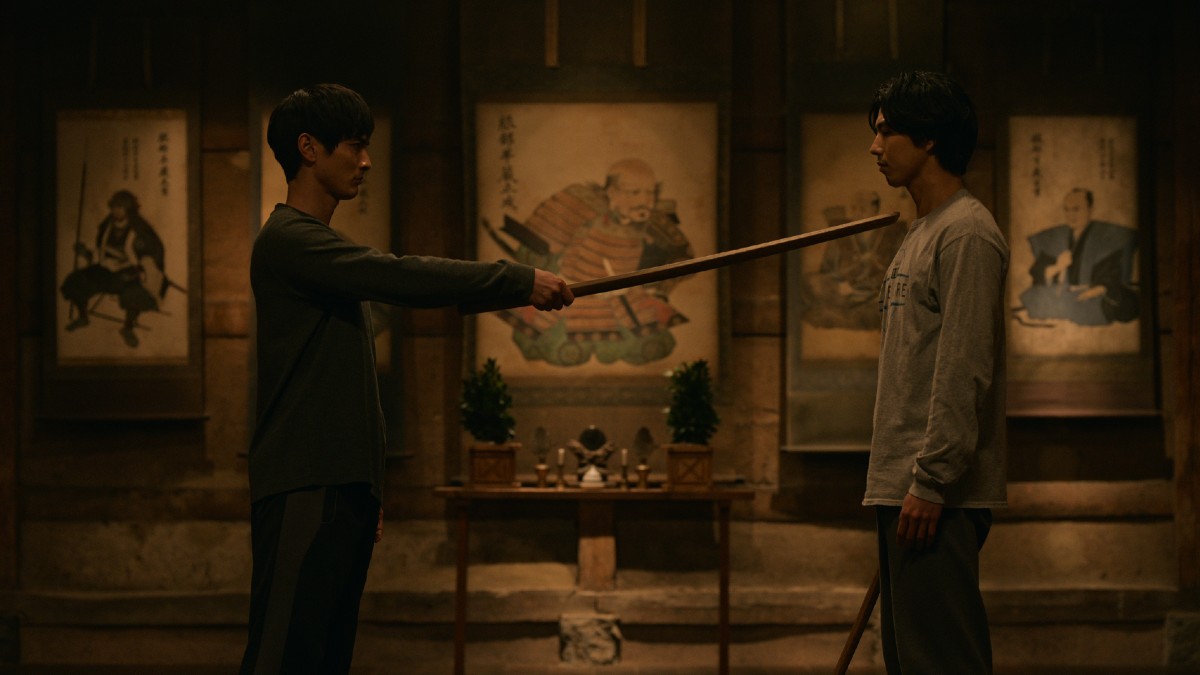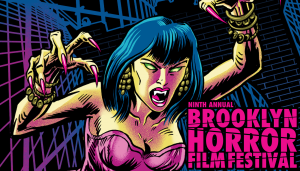
“Only ignorant fools say ‘ninja.’” So claims Taki, the mysterious matron of the Tawara family, as she sternly corrects her grandson in the old ways. Played by veteran actress Nobuko Miyamoto (Tampopo, A Taxing Woman), there’s much more to Grandma Taki than meets the eye. Such is the way of the world in Netflix’s new series, House of Ninjas. The proper term is “shinobi.” It’s what was used historically.
House of Ninjas is a new action dramedy that follows a modern-day shinobi family who has forsaken the lethal trade of their ancestors for a “normal” life. And like in every dramedy, the Tawaras are comically and tragically dysfunctional. The family patriarch, Soichi (Yosuke Eguchi) struggles to maintain a low-key profile whilst his wife Yoko (Tae Kimura) and daughter Nagi (Aju Makita) succumb to their old devious habits, stealing stuff just for the rush. Their thievery goes from grocery store shoplifting to museum art object theft. Then there’s the youngest son, Riku (Tenta Banka), who beyond not knowing the right word for shinobi, is completely naïve to his family’s nefarious past. And at the center is the slacker son Haru (Kento Kaku) who cheats on the strict shinobi rules of vegetarianism and chastity by sneaking out to meet a girl over beef bowls.
Beyond his leading role, Kaku created the original story for House of Ninjas and serves as a co-executive producer. Although unknown in the West, Kaku is a well-established TV star in Japan with over 70 roles to his credit, as well as heartthrob photobooks devoted to his fandom. House of Ninjas is his dream project, and an opportunity for global exposure. He was inspired to create it from a real-life trip where he saw some ninjas…or shinobi.
“Maybe five years ago, I went to a ninja show in the countryside of Japan with my family,” Kaku says.“There are so many tourists and there are so many children, and they’re so excited about it. And when I saw there, I was like ‘ohh, that’s it!’”
Various regions of Japan are famous for their ninja history. Today, they celebrate their shinobi legacy with ninja shows, parades, and festivals. Japan’s Iga province gave rise to one of the more famous historical ninja clans, the Iga-ryu, in the late 15th century. In 2017, Mie University established the International Ninja Research Center to study the history and culture of ninja (Iga is part of the western Mie prefecture).
Witnessing one of these cultural ninja shows first hand, Kaku was inspired. The experience piqued Kaku’s interest in authentic ninja culture so he started to dig into the actual history behind Japan’s notorious spies and assassins.
“There are so many rules like no eating meat, no drinking, no dating, and no sex,” Kaku says. “I was fascinated by these rules and I realized it is very attractive.”
As Kaku’s vision of House of Ninjas began to manifest, the project enlisted the acclaimed American film director Dave Boyle. Boyle has directed a string of lauded indie films with Asian and Asian-American casts like Surrogate Valentine, Daylight Savings, and Man from Reno. His work is character driven with richly written roles and sublime dialog.
“My first thing I did was just to take Kento’s original project proposal and write a ‘bible’ that set out a story and worldview for the show,” Boyle says.
That got the gears turning at Netflix and consequently, Boyle found himself writing the first episode. One thing led to another and the next thing he knew, he was offered the chance to direct. “There was a question about whether I’d even be able to get a visa to come to Japan because it was still virus lockdown time.”
Produced at Japan’s legendary Toho Studios that just delivered Godzilla Minus One and Shin Ultraman, Boyle was the only non-Japanese crew person on House of Ninjas. He relocated to Tokyo for 18 months during the production. Boyle also chose not to use an interpreter. Instead, he relied on his second language skills, which occasionally tripped him up because everyday conversational Japanese doesn’t include many of the specific technical terms used on Toho sets. But Boyle felt those miscommunications were bonding opportunities and he credits the top tier quality of the cast and crew for their tremendous support.
“I just decided to just dive right in and Kento’s confidence gave me confidence because he really pushed for me to be on board,” Boyle says. “Everybody wanted to make the same show. And I feel like in the end, that’s the most wonderful experience the director can ask for when everybody is aiming at the same bullseye instead of all over the place.”
House of Ninjas centers around the Tawara family, who are descendants of Hattori Hanzo. While that name might evoke the sword smith played by legendary Japanese action star Sonny Chiba in Kill Bill, the real Hanzo (1542-1597) was one of Japan’s most famous ninjas. He served Tokugawa Ieyasu (1543-1616), who established the Tokugawa Shogunate of Japan (1603-1868). This is the same military dictator depicted as the fictionalized Lord Toranaga in James Clavell’s Shogun, with a redux miniseries coming to FX Hulu on Feb. 27.
The Tawaras are called back into service because their age-old rivals, the Fuma clan, who they thought they had destroyed, have resurfaced. Like the Hatfields and McCoys, the feud between these two shinobi clans is legendary. Here again, the show delved into authentic history.
“I did a deep dive. I was trying to find some corners of Ninja lore that maybe had been less explored,” Boyle says.
The Fuma clan traces back to Japan’s Sengoku period in the 15th and 16th centuries. There’s a museum dedicated to the Fuma ninja within Odawara castle, where House of Ninjas is set. The Fuma clan has a peculiar place in Japanese history.
“There’s a lot of different schools of thought on how they fit into history and whether they’re the good guys are the bad guys,” explains Boyle. “You go to Odawara and they’re kind of folk heroes there, sort of like Robin Hood and his merry men. And yet in other places, in fiction and in some of the history books, they’re painted as the villains and bandits.”
To build the world of House of Ninjas, Boyle and Kaku worked to make everything as authentic as they could.
“We are extrapolating on existing into history, we’re taking some liberties and having fun with it, but the base level of knowledge sort of had to be there for us to build up the world of the show,” Boyle says.
To fortify their historical cred, House of Ninjas even consulted with Professor Yuji Yamada, a leading authority on ninja history from Mie University’s International Ninja Research Center. “[We got] his take on it and a lot of our depiction of the Fuma clan,” Boyle says.
However, despite its genuine underpinnings, House of Ninjas is acutely aware of the ninja genre and finds the humor in it.
“I wanted to take a little bit of a cockeyed approach to it and just imagine if that rivalry kept on for a few hundred more years, what their lives might look like in modern day Japan,” Boyle says. “Ninjas are sort of the heroes of Japan, but they’re also the villains of Japan. It just all sort of depends on which master they’re serving.”
In House of Ninjas, the Tawaras serve the BNM, or the Bureau of Ninja Management, a covert government branch that sends them on missions, cleans up after their massacres, and occasionally tortures enemies. Both Boyle and Kaku were huge fans of the Shinobi No Mono films, an eight-movie franchise from the early ’60s.
“They were the movies that kind of started the ninja boom, and they’re really, really wonderful,” raves Boyle. “They also do such a great job of depicting the really, really difficult lives that shinobi had.”
Being from Japan, Kaku’s experience of the ninja genre was influenced by classic Japanese cinema, manga, and anime. However he missed out on many of the Hollywood films of the ’70s and ’80s. He joked that his knowledge of the Western ninja genre is limited to “American Ninja Turtles movies.”
“We’re omnivorous when it comes to ninja content,” Boyle adds. “We like it.”
All episodes of House of Ninjas are available to stream on Netflix now.
The post Why Netflix’s House of Ninjas Doesn’t Like to Say “Ninja” appeared first on Den of Geek.









